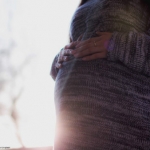In the earliest studies, postpartum depression was described an episode of depression associated with childbirth, typically emerging within the first three months after delivery. As more research has been carried out, we have learned that a sizeable number of women with PPD actually begin to experience symptoms during pregnancy. The bottom line is that women with PPD are a heterogeneous group, and several recent studies have attempted to identify and characterize different subtypes of PPD.
The First Baby Study, carried out at the Pennsylvania State University College of Medicine, followed a cohort of 3006 women recruited while pregnant with their firstbaby. The women completed telephone surveys measuring depression during the third trimester, and at 1, 6, and 12 months postpartum using the Edinburgh Postnatal Depression Scale (EPDS). A total of 2802 (93%) of mothers completed interviews through 12 months. In this study, the researchers observed six distinct depression trajectories (see figure below).
About 85% of the women had low EPDS scores which were relatively stable across pregnancy and the postpartum period (Trajectories 1, 2, and 3). Most studies or screening programs would not identify these women as “depressed” because their EPDS scores were less than 10. The remaining 15% of the women had significant depressive symptoms that extended from the third trimester of pregnancy up to one year after delivery.
What really seemed to determine vulnerability to more severe depressive symptom was a personal history of anxiety or depression prior to pregnancy. Compared to women with no history of anxiety or depression, women with a history of anxiety or depression were 7.9 times more likely to belong to group 4 (95% CI 3.6–17.4), 10.8 times more likely (95% CI 6.3–18.5) to belong to group 5, and 18.5 times more likely (95% CI 7.6–45.1) to belong to group 6. Other risk factors for more severe depressive symptoms included being unmarried and having fewer social supports.
Looking at this figure, what is also concerning is that women with clinically significant depressive symptoms (Trajectories 4, 5 and 6) experience depressive symptoms throughout the first year of the child’s life. Furthermore, women in group 4, encompassing 1.7% of the mothers, were nondepressed at the third trimester but experienced worsening depressive symptoms across the first year of the child’s life.
Given the considerable medical literature demonstrating that postpartum depression can negatively affect a child’s behavior and cognitive development, the persistence of depressive symptoms in a sizeable proportion of new mothers becomes a major public health issue.
This study gives us a picture of what goes on in the community. In the First Baby Study, which was launched in 2010, women were recruited from community hospitals in Pennsylvania and included a diverse population of women. It is somewhat disheartening to see that, despite our intense efforts to identify and treat perinatal depression, this study shows that 15% of women experienced clinically significant depressive symptoms over the first year of their child’s life. This study does not give any information regarding the mothers’ use of mental health services, so we don’t know how many of the women were receiving active treatment for depression, although it would be reasonable to assume, given that this study took place within the last five years, that at least some of the women included in the First Baby Study were getting some type of mental health services. Trying to be a bit more optimistic, one could argue that the number of depressed women would be even higher without some type of intervention.
For me, this study raises many questions. In this community sample, what type of depression screening is being done? Are the women with persistent depression getting treatment? If so, what kind of treatment? Is it adequate? Is it the right type of treatment? What are we doing to prevent depression in this population? Given that postpartum illness can have such significant effects on the mother and her family, we simply need to do better.
Ruta Nonacs, MD PhD
McCall-Hosenfeld JS, Phiri K, Schaefer E, Zhu J, Kjerulff K. Trajectories of Depressive Symptoms Throughout the Peri- and Postpartum Period: Results from the First Baby Study. J Womens Health (Larchmt) 2016, Jun 16. [Epub ahead of print]








Leave A Comment